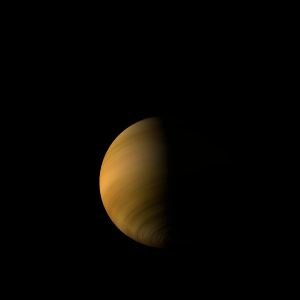|
|
Space Astro
|
Info for exoplanet "Teyate"
| Scientific (actual) data |
|---|
| Planet | V1298 Tau c |
| Planet status | Confirmed |
| Planet mass | 0.0623 |
| Radius | 0.4675 |
| Orbital period | 8.24872 |
| Semi major axis | 0.0839 |
| Orbit eccentricity | 0.43 |
| Inclination | 88.49 |
| Discovered | 2019 |
| Updated | 2023-08-03 |
| Omega | 92 |
| Tzero tr | 2457060 |
| Impact parameter | 0.36 |
| K | 5.7 |
| Temperature (kelvin) | 979 |
| Publication | Published in a refereed paper |
| Detection type | Primary Transit |
| Mass detection type | Radial Velocity |
| Radius detection type | Primary Transit |
| Star name | V1298 Tau |
| Right ascension | 61.33° |
| Declination | 20.16° |
| Mag v | 10.1 |
| Star distance | 108.5 |
| Star mass | 1.1 |
| Star radius | 1.305 |
| Star sp type | K0-K1.5 |
| Star age | 0.023 |
| Star temperature | 4970 |
| Wikipedia article | V1298 Tau c |
Back
| |
| Fictional info (?) |
|---|
| Suggested name | Teyate |
| Planet type | Small warm gas planet |
| It is the second-brightest natural object in the night sky after Myujire Hiru, reaching an apparent magnitude of -5 - bright enough to cast shadows at night and, often, visible to the naked eye in broad daylight.
This planet is named after the deity Teyate, the demon of fear.
The polar regions are constantly below 198°K (-75°C).
Teyate has been explored on several occasions by robotic spacecraft, most notably during the early Pioneer and Daedalus flyby missions and later by the Galileo orbiter. |
| Atmosphere | Ozone | 68% |
| Sulfur dioxide | 28% |
| 2H2O | 2.5% |
| Hydrogen | 1.1% |
| Oxygen | 0.0074% |
| Atmospheric pressure | 0.8 bar |
 |
| No known satellites |
| Google search for Teyate |
|
Website by Joachim Michaelis
|
|
|
|